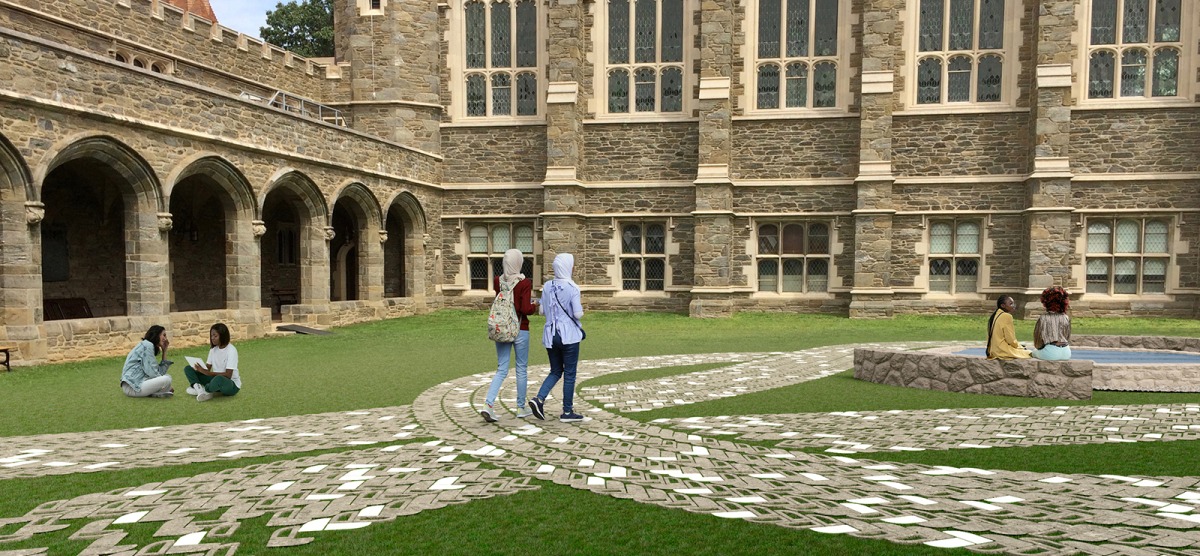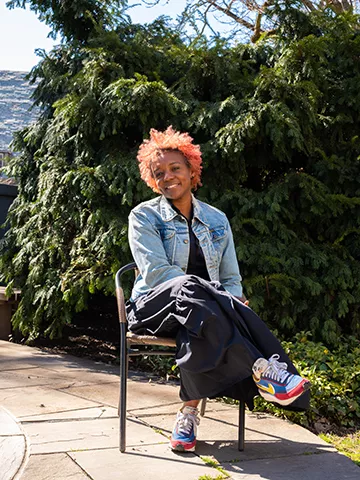
Monument to Inclusion
A new campus artwork by D.C.-based artist Nekisha Durrett will shed light on Bryn Mawr’s missing stories.
This spring saw an exciting milestone in a project to commission a lasting campus art installation that responds to the legacy of exclusionary practices at Bryn Mawr.
The project is a multiyear collaboration with students, staff, faculty, alumnae/i, and Monument Lab (a nonprofit public art and history studio based in Philadelphia) that responds to the question, “What stories are missing from Bryn Mawr College?”
During the 2021–22 academic year, Monument Lab staff worked with paid student researchers on an intensive community engagement process that built on ongoing grassroots and College-supported efforts to reveal and repair harm from the College’s history.
A call for artist proposals was released in October 2022 and five finalists (from 110 applications) were selected to visit campus and publicly present their concepts for community feedback in March. Alums were able to watch a livestream of the presentations made available online.
The Artist Advisory Committee delivered its recommendations to Kim Cassidy and the Board of Trustees, and in early May, the winner—Washington D.C.-based artist Nekisha Durrett—was announced.
Don’t Forget to Remember (Me)
Durrett’s proposed installation, titled Don’t Forget to Remember (Me), will be situated in the Cloisters at the center of Old Library and uses terracotta pavers to create woven pathways in the courtyard which, when seen from above, take the shape of a knot.
“It’s a braided path that forms a knot, symbolizing the fact that we are all connected and there are multiple histories that are bound up together,” says Durrett. “All of those stories need to be told in order for a space to feel whole.”
Durrett’s design calls for the pavers to be made from clay collected from Perry House, the former dormitory for Black students. “To me, that
soil from Perry House is extremely loaded, and by incorporating it in the pavers, it was a way I could bring the essence of Perry House to the Cloisters, a space where Black students, Black people, were not welcome unless they were in some form of servitude,” says Durrett.
Engraved pavers will include the names of staff whose work was critical to building and operating the College, particularly in its early decades, but whose contributions were historically unrecognized.
The installation is scheduled to be completed by late 2024. A dedication ceremony is being planned that will include a multidisciplinary symposium on issues related to the artwork and project.
“Nekisha’s design acknowledges Old Library’s wounds, lifts up what has been lost, and will transform how we experience this space," said Bryn Mawr President Kim Cassidy. "I look forward to it playing a central role in future opportunities for our community to work toward reconciliation and repair as we strive to create a more inclusive and welcoming campus.”
Published on: 06/13/2023
